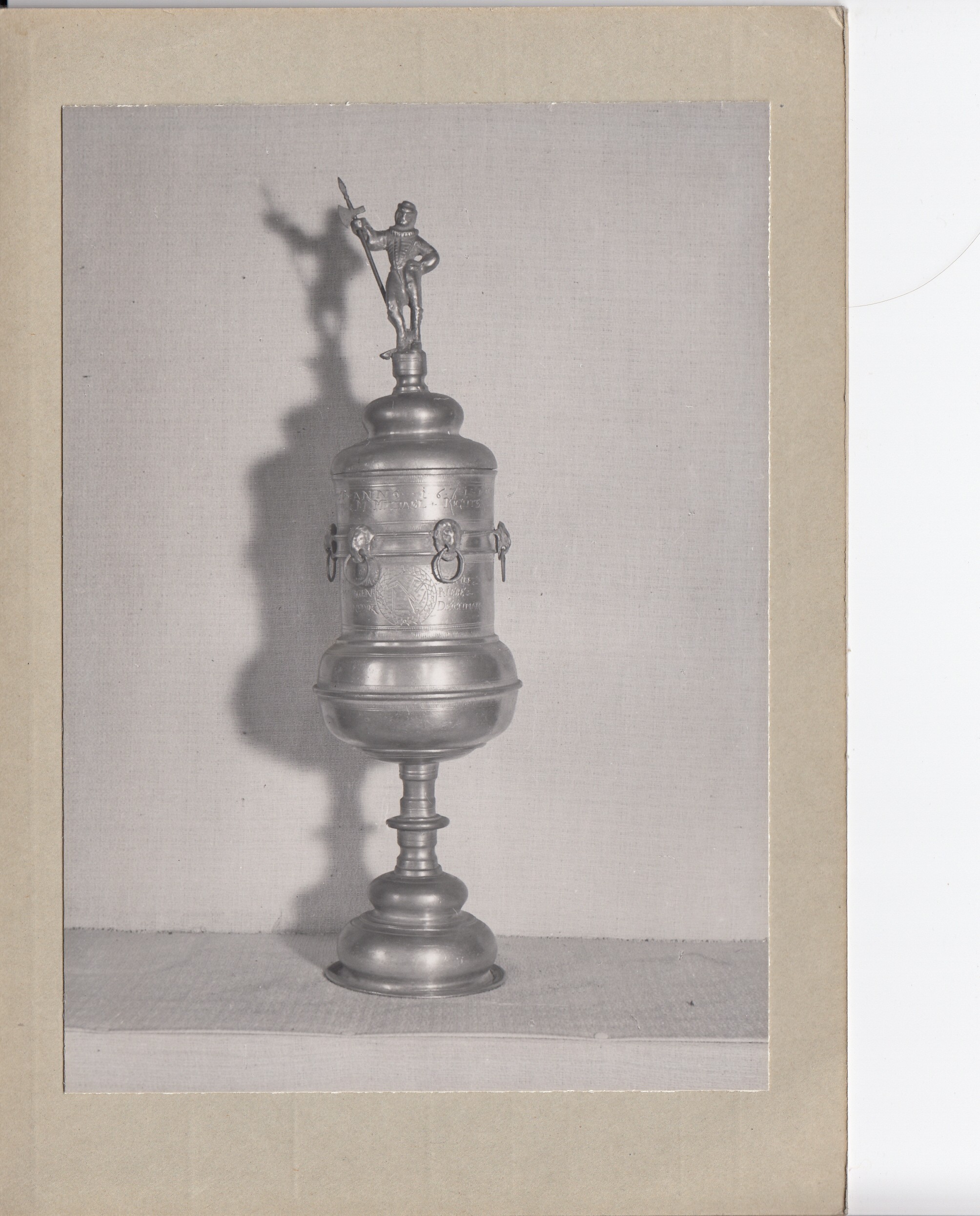Plattkugliger beringter Bauch mit zylindrischem Oberteil der auf umlaufenden Band sechs Löwenköpfe trägt. Hoher doppelwulstiger Fuß und ebensolcher Deckel mit Hellebardenträger. Auf dem Oberteil: "Dit is der Timmerleut in Pardelbarch ihr Ampts Willkommst Anno 1671: M. Hans Ohlgart, M. Michael Richter, M. Thomas Krose, M. Matthias Stehn, M. Jürgen Riebe - Benedict Deichmann Altgeselle".
Gießer: Hans Plagemann, Zinngießer in Parchim
Lagerbuch 309 (1909): ganze Höhe 67 cm
Stadt- und Regionalmuseum Perleberg
Foto: Erwin Schreyer (1941)
Lit:
Wilhelm Ratig, Führer durch die Sammlung, Perleberg 1912, 32, Nr. 309.
Erwin Hintze, Die deutschen Zinngießer, Bd. 3: Norddeutsche Zinngießer, Leipzig 1923, 317 f. Nr. 1707.
en
